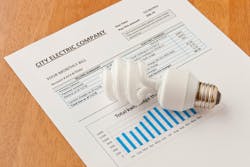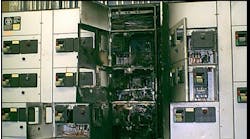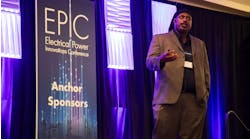A common misconception about energy-savings is it means investing money on technology and hoping you get it back through reductions in the electric bill. This is sometimes true, for example you purchase a premium energy-efficient motor. The motor costs more, because it’s manufactured with better components, tighter tolerances, and slightly more difficult methods.
The title of this piece has a double meaning. Yes, energy savings can be easy and they can serve you well. But how often have you thought about easy energy savings at the electrical service?
As in real estate, three factors are very important: location, location, location. When you look at a plan drawing and decide on a service location, you are typically picking from a wide range of locations. In respect to the facility’s internal power distribution, it could easily be the case that several choices are of equal value. Pick one or the other, and it doesn’t matter.
But what if you locate your service entrance next to a room where hot processes are running? That could raise the ambient temperature in the service switchgear room by 20°F; this means conductor impedance increases. The same dynamic holds true if you locate it next to a large heat-radiating surface such as a parking lot. In this latter case, you’re also putting it close to foot traffic and that’s suboptimal at best.
If, on the other hand, you locate it away from heat sources and in the path of prevailing breezes (or at least in a place conducive to natural convection of heat from the room to the outside), the loss of efficiency is much less.
You aren’t buying any new technology. Except for perhaps the cost of slightly longer conductors, you aren’t spending additional funds. This energy-savings is free. And it’s permanent. Locating the service on the south side adjacent to the back lawn is much better than on the west side (sun-intensive in the afternoon) adjacent to the employee parking lot.
However, other factors come into play. For example, you must:
- Allow for future expansion.
- Conform to clearance requirements.
- Avoid locating next to things like evaporative cooling towers (excess moisture).
- Not locate it in a low spot, where water ingress is likely in foul weather.Ensure there is access for maintenance and first responders. So you need a roadway to it. If the facility’s back wall is 10 feet from the property line, don’t put the service on the back wall.





